Dear Zazie, Here is today’s Lovers’ Chronicle from Mac Tag dedicated to his muse. Follow us on twitter @cowboycoleridge. Who is the vision of your dreams? Do you know unrequited love? Rhett
The Lovers’ Chronicle
Dear Muse,
it is so,
that those who cannot,
never find it
and those that can,
never have to seek
realize, too late for sure,
that the emotional self
recovers from loss
but only in appearance
eventually the wound
will make itself felt
as an ache that deepens
and fills everything
only then
after recovery
and forgettin’
can the worst
be faced
© copyright 2018 mac tag/cowboy coleridge all rights reserved
a deluge of rain
skies darken
thunder booms
and in the noise
all appears to me
an abode
of gloomy sadness
on this night
sleep comes
mercifully
in the mornin’
sunlight pierces
through the shutters
in our room,
where night lingers still,
tracin’ a vague outline
of you lyin’ here
© copyright 2017 mac tag/cowboy Coleridge all rights reserved
I dreamed I dream of you
but it came with pain and dole
for the vision of my dream
is not the truth
© copyright 2012 mac tag/cowboy Coleridge all rights reserved
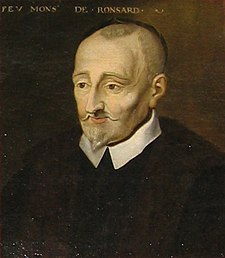 |
|
Today is the birthday of Pierre de Ronsard (Couture-sur-Loir, Kingdom of France; 11 September 1524 – 27 December 1585 La Riche, Kingdom of France); poet or, as his own generation in France called him, a “prince of poets”.
Quand vous serez bien vieille, au soir, à la chandelle,
Assise auprès du feu, dévidant et filant,
Direz, chantant mes vers, en vous émerveillant:
“Ronsard me célébrait du temps que j’étais belle.”
- When you are very old, at evening, by candelight,
Sitting near the fire, spooling and spinning the wool,
You will say, in wonder, as you sing my verses,
“Ronsard praised me in the days when I was beautiful.”- “Quand vous serez bien vieille, au soir, à la chandelle”, Sonnets pour Hélène (1578), ll. 1-4
- Cueillez dès aujourd’hui les roses de la vie.
- Gather today the roses of life.
- “Quand vous serez bien vieille, au soir, à la chandelle,” l. 14
- Gather today the roses of life.
| Thomas Hill | |
|---|---|
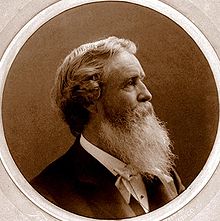
Thomas Hill
|
|
Today is the birthday of Thomas Hill (Birmingham, England September 11, 1829 – June 30, 1908 Raymond, California); artist of the 19th century. He produced many paintings of the California landscape, in particular of the Yosemite Valley, as well as the White Mountains of New Hampshire. He is buried at Mountain View Cemetery in Oakland, California.
Gallery
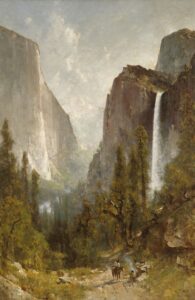
« Bridal Veil Falls, Yosemite Valley » (1892)


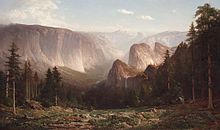

-
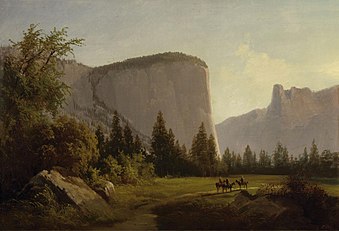
El Capitan, Oakland Museum of California
-

Indians at Campfire, Yosemite Valley (c.1885), Blanton Museum of Art, Austin, Texas
-

Muir Glacier, Alaska, Anchorage Museum
-
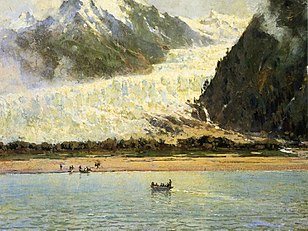
Davidson Glacier
| O. Henry | |
|---|---|
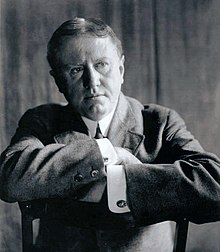
Portrait of O. Henry, by W. M. Vanderweyde, 1909
|
|
Today is the birthday of O. Henry (William Sydney Porter; Greensboro, North Carolina; September 11, 1862 – June 5, 1910 New York City); short story writer. His short stories are known for their wit, wordplay, warm characterization, and surprise endings.
In Austin, Texas, Porter met and began courting Athol Estes, then seventeen years old and from a wealthy family. Her mother objected to the match because Athol was ill, suffering from tuberculosis. On July 1, 1887, Porter eloped with Athol to the home of Reverend R. K. Smoot, where they were married. Athol died from tuberculosis on July 25, 1897. Porter married again in 1907 to childhood sweetheart Sarah (Sallie) Lindsey Coleman, whom he met again after revisiting his native state of North Carolina. Sarah Lindsey Coleman was herself a writer and wrote a romanticized and fictionalized version of their correspondence and courtship in her novella Wind of Destiny.
Porter was a heavy drinker, and his health deteriorated markedly in 1908, which affected his writing. In 1909, Sarah left him, and he died on June 5, 1910, of cirrhosis of the liver, complications of diabetes, and an enlarged heart. After funeral services in New York City, he was buried in the Riverside Cemetery in Asheville, North Carolina.
| D. H. Lawrence | |
|---|---|
 |
|
Today is the birthday of D. H. Lawrence (David Herbert Richards Eastwood, Nottinghamshire; 11 September 1885 – 2 March 1930 Vence, France); novelist, poet, playwright, essayist, literary critic and painter. His collected works, represent an extended reflection upon the dehumanising effects of modernity and industrialisation. Lawrence explored emotional health, vitality, spontaneity and instinct.
Lawrence endured official persecution, censorship, and misrepresentation of his creative work throughout the second half of his life, much of which he spent in a voluntary exile which he called his “savage pilgrimage”. At the time of his death, his public reputation was that of a pornographer who had wasted his considerable talents. Later, his works were championed, placing much of Lawrence’s fiction within the canonical “great tradition” of the English novel.
In March 1912 Lawrence met Frieda Weekley (née von Richthofen), with whom he was to share the rest of his life. Six years older than her new lover, she was married to Ernest Weekley, Lawrence’s former modern languages professor at University College, Nottingham, and had three young children. She eloped with Lawrence to her parents’ home in Metz, a garrison town then in Germany near the disputed border with France. Lawrence left for a small hamlet to the south of Munich, where he was joined by Frieda for their “honeymoon”, later memorialised in the series of love poems titled Look! We Have Come Through (1917).
From Germany they walked southwards across the Alps to Italy, a journey that was recorded in the first of his travel books, a collection of linked essays titled Twilight in Italy and the unfinished novel, Mr Noon.
Lawrence and Frieda returned to Britain in 1913 for a short visit, during which they encountered and befriended critic John Middleton Murry and New Zealand-born short story writer Katherine Mansfield.
Lawrence and Weekley soon went back to Italy, staying in a cottage in Fiascherino on the Gulf of Spezia. Here he started writing the first draft of a work of fiction that was to be transformed into two of his better-known novels, The Rainbow and Women in Love. While writing Women in Love in Cornwall during 1916–17, Lawrence developed a strong and possibly romantic relationship with a Cornish farmer named William Henry Hocking. In a letter written during 1913, he writes, “I should like to know why nearly every man that approaches greatness tends to homosexuality, whether he admits it or not …” He is also quoted as saying, “I believe the nearest I’ve come to perfect love was with a young coal-miner when I was about 16.”
Eventually, Frieda obtained a divorce from Weekley. The Lawrence’s returned to Britain shortly before the outbreak of World War I and were married on 13 July 1914. During this period he finished writing Women in Love in which he explored the destructive features of contemporary civilization through the evolving relationships of four major characters as they reflect upon the value of the arts, politics, economics, sexual experience, friendship and marriage. The novel is a bleak, bitter vision of humanity and proved impossible to publish in wartime conditions. Not published until 1920, it is now widely recognised as an English novel of dramatic force and intellectual subtlety.
In late February 1922 the Lawrences left Europe behind with the intention of migrating to the United States. They sailed in an easterly direction, first to Ceylon and then on to Australia.
The Lawrences finally arrived in the US in September 1922. Here they encountered Mabel Dodge Luhan, a prominent socialite, and considered establishing a utopian community on what was then known as the 160-acre (0.65 km2) Kiowa Ranch near Taos, New Mexico. After arriving in Lamy, New Mexico via train, they bought the property, now called the D. H. Lawrence Ranch, in 1924, in exchange for the manuscript of Sons and Lovers. He stayed in New Mexico for two years, with extended visits to Lake Chapala and Oaxaca in Mexico.
A brief voyage to England at the end of 1923 was a failure and he soon returned to Taos, convinced that his life as an author now lay in America. However, in March 1925 he suffered a near fatal attack of malaria and tuberculosis while on a third visit to Mexico. Although he eventually recovered, the diagnosis of his condition obliged him to return once again to Europe. He was dangerously ill and the poor health limited his ability to travel for the remainder of his life. The Lawrences made their home in a villa in Northern Italy, living near Florence while he wrote The Virgin and the Gipsy and the various versions of Lady Chatterley’s Lover (1928). The latter book, his last major novel, was initially published in private editions in Florence and Paris and reinforced his notoriety.
Lawrence continued to write despite his failing health. In his last months he wrote numerous poems, reviews and essays, as well as a robust defence of his last novel against those who sought to suppress it. After being discharged from a sanatorium, he died on 2 March 1930 at the Villa Robermond in Vence, France, from complications of tuberculosis. Frieda Weekley commissioned an elaborate headstone for his grave bearing a mosaic of his adopted emblem of the phoenix. After Lawrence’s death, Frieda lived with Angelo Ravagli on the ranch in Taos and eventually married him in 1950. In 1935 Ravagli arranged, on Frieda’s behalf, to have Lawrence’s body exhumed and cremated and his ashes brought back to the ranch to be interred there in a small chapel amid the mountains of New Mexico
Verse
Those that go searching for love
only make manifest their own lovelessness,
and the loveless never find love,
only the loving find love,
and they never have to seek for it.
- “Search for Love” in: The Works of D. H. Lawrence, Wordsworth Editions, 1994, p. 552
Prose
- And dimly she realized one of the great laws of the human soul: that when the emotional soul receives a wounding shock, which does not kill the body, the soul seems to recover as the body recovers. But this is only appearance. It is really only the mechanism of the reassumed habit. Slowly, slowly the wound to the soul begins to make itself felt, like a bruise, which only slowly deepens its terrible ache, till it fills all the psyche. And when we think we have recovered and forgotten, it is then that the terrible after-effects have to be encountered at their worst.
- Lady Chatterley’s Lover (1928)
- Folks should do their own fuckin’, then they wouldn’t want to listen to a lot of clatfart about another man’s.
- Lady Chatterley’s Lover (1928)
- I believe in being warm-hearted. I believe especially in being warm-hearted in love, in fucking with a warm heart. I believe if men could fuck with warm hearts, and the women take it warm-heartedly, everything would come all right. It’s all the cold-hearted fucking that is death and idiocy.
- Lady Chatterley’s Lover (1928)
And today is the birthday of Stephen Morgan Etnier (York, Pennsylvania; September 11, 1903 – November 7, 1984 Harpswell, Maine); realist painter, painting for six decades. His work is distinguished by a mixture of realism and luminism, favoring industrial and working scenes, but always imbued with atmospheric light. Geographically, his career spanned the length of the eastern Atlantic and beyond.
Gallery
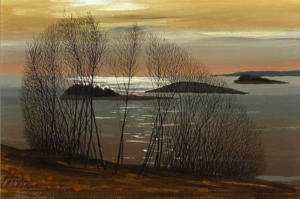
Three islands
-

Still Morning 1960 collection of David Etnier
-

Fort Popham 1981 collection of David Etnier
-

Storefront, Nassau 1957 collection of David Etnier
-

Study for Hurricane Ridge, Harpswell ca. 1970s collection of David Etnier
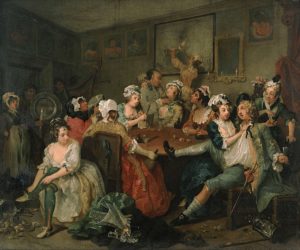
Hogarth’s third painting, showing Tom experiencing a brothel in London
And today is the premier day of The Rake’s Progress,an English-language opera in three acts and an epilogue by Igor Stravinsky. The libretto, written by W. H. Auden and Chester Kallman, is based loosely on the eight paintings and engravings A Rake’s Progress (1733–1735) of William Hogarth, which Stravinsky had seen on 2 May 1947, in a Chicago exhibition.
The story concerns the decline and fall of one Tom Rakewell, who deserts Anne Trulove for the delights of London in the company of Nick Shadow, who turns out to be the Devil. After several misadventures, all initiated by the devious Shadow, Tom ends up in Bedlam, a hospital for the insane at that time situated in the City of London. The moral of the tale is: “For idle hearts and hands and minds the Devil finds work to do.”
Mac Tag
No form of love is wrong, so long as it is love, and you yourself honour what you are doing. Love has an extraordinary variety of forms! And that is all that there is in life, it seems to me. – D.H. Lawrence
Be still when you have nothing to say; when genuine passion moves you, say what you’ve got to say, and say it hot. – D.H. Lawrence
When you are sad,
The mother of the wind mourns too,
And her old wind that no mirth ever had,
Wanders and wails before my heart most true.
– W.B. Yeats

No Comments on "The Lovers’ Chronicle 11 September – a trace – art by Thomas Hill & Stephen Etnier – birth of Pierre de Ronsard, O. Henry & D.H. Lawrence – premiere of The Rake’s Progress by Igor Stravinsky"